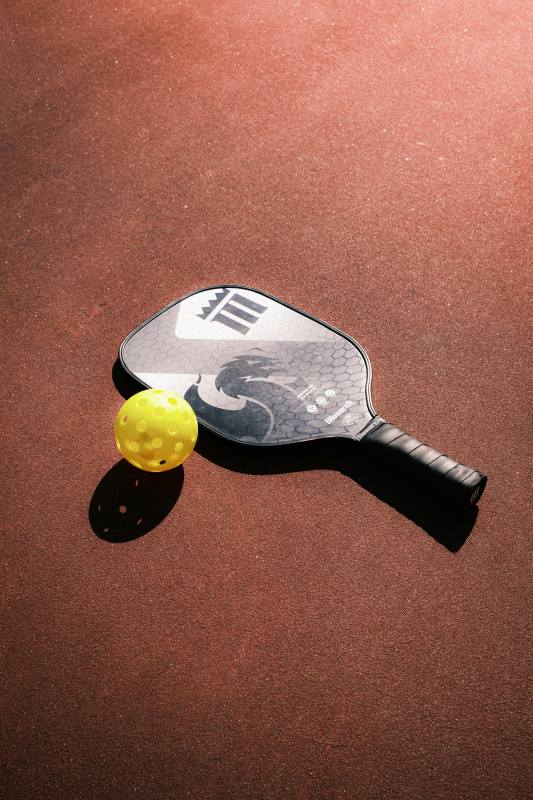The rise of pickleball as a popular sport has created a demand for lightweight pickleball paddles that offer both power and control. The key challenge in manufacturing these paddles is to achieve a balance between weight and durability. Manufacturers must carefully select materials and employ precise manufacturing processes to ensure the lightweight pickleball paddle performs optimally while maintaining strength. In this article, we will walk you through the critical steps in the design and production process of a lightweight pickleball paddle, from material selection to the final assembly.
1. Material Selection: The Foundation of a Lightweight Pickleball Paddle
The first step in crafting a lightweight pickleball paddle is selecting the right materials. Paddles are typically made from composite materials, such as fiberglass, carbon fiber, or polymer cores. Each of these materials offers unique properties that influence the final weight, durability, and performance of the paddle.
Fiberglass is often used for its lightweight nature and cost-effectiveness. It provides a good balance of durability and flexibility, which contributes to the paddle’s performance. On the other hand, carbon fiber is a premium material that offers even greater strength and a lighter weight compared to fiberglass. However, carbon fiber paddles tend to be more expensive. The choice of material largely depends on the manufacturer’s goal—whether to prioritize performance, cost, or durability.
Another important aspect of material selection is the core of the paddle. Most lightweight pickleball paddles use a honeycomb core made from polymer or Nomex. The honeycomb structure helps reduce the weight while maintaining the strength needed for power shots and control.
 2. Molding and Shaping: Crafting the Paddle’s Frame
2. Molding and Shaping: Crafting the Paddle’s Frame
Once the materials are selected, the next crucial step is the molding and shaping of the paddle frame. Lightweight pickleball paddles typically feature a high-quality composite frame that is both sturdy and ergonomic. The frame is usually molded through a process known as compression molding, where the chosen materials are heated and pressed into a mold that defines the shape of the paddle.
During this process, manufacturers must ensure the paddle is light but also has the appropriate strength to endure repetitive use. Overly thin frames may lead to a paddle that breaks or warps quickly, while overly thick frames can increase the weight, defeating the purpose of creating a lightweight paddle.
The ergonomic design of the handle is another critical aspect of this step. Manufacturers will focus on designing handles that provide comfort, ensuring that players can grip the paddle for extended periods without discomfort. Handles are often made from materials like rubber or cushioned foam to provide a firm yet comfortable grip.
3. Surface Treatment: Enhancing Durability and Grip
After shaping the paddle frame, manufacturers proceed to the surface treatment stage. The outer layer of the lightweight pickleball paddle needs to have a smooth, durable surface that enhances control and provides good grip for the ball. To achieve this, the paddle surface is often coated with a layer of fiberglass or carbon fiber, which helps to reinforce the structure while ensuring an optimal playing experience.
For paddles made with carbon fiber, the surface treatment is especially important to ensure the material maintains its lightweight properties while providing the necessary impact resistance. Some paddles may undergo additional treatments such as UV coating to improve the longevity of the paddle and prevent damage from prolonged exposure to sunlight or moisture.
The textured surface is also crucial for the player's control. Manufacturers might use a textured grip or sandpaper finish to provide players with more friction and, therefore, better ball control during play. These small but impactful details play a significant role in making a lightweight pickleball paddle more responsive to different playing styles.
4. Final Assembly: Ensuring Quality and Performance
After the paddle frame is shaped and the surface treated, the final assembly process begins. This involves attaching the handle to the frame, testing the paddle for performance, and performing quality assurance checks.
Quality checks are crucial in ensuring that the lightweight pickleball paddle meets industry standards for durability, balance, and performance. Manufacturers will conduct tests to check the paddle’s weight, balance, and overall feel to ensure it is well-suited for pickleball gameplay. They will also check for any defects in the materials, such as cracks or weak spots, which could affect the paddle's performance.
In addition to performance testing, the handle is securely attached to the paddle's frame. Manufacturers must ensure that the connection is strong to prevent the handle from detaching during use, which could cause safety issues for players.
5. Packaging and Distribution: Reaching Customers
Once the paddles have passed all tests and quality checks, they are carefully packaged for shipment. Lightweight pickleball paddles are typically packed in protective packaging to prevent damage during transport. Manufacturers also provide instructions on paddle care and maintenance to ensure the longevity of the product.
The global demand for lightweight pickleball paddles continues to rise, and manufacturers are focusing on improving both the speed of production and the quality of their products. By utilizing the best materials and cutting-edge technologies, companies can produce paddles that cater to the growing pickleball market while ensuring that players have the best possible equipment to enhance their performance.
The manufacturing of lightweight pickleball paddles requires a careful balance between materials, design, and precision. Manufacturers must ensure that each step of the production process, from material selection to final assembly, is optimized for performance and durability. By using advanced materials such as carbon fiber and fiberglass, manufacturers can create lightweight pickleball paddles that are strong, responsive, and comfortable for players at all skill levels.
As the popularity of pickleball continues to grow, the demand for high-performance, lightweight pickleball paddles will only increase. Manufacturers must continue to innovate in both materials and production methods to meet this demand and ensure they provide top-quality equipment for players worldwide.

